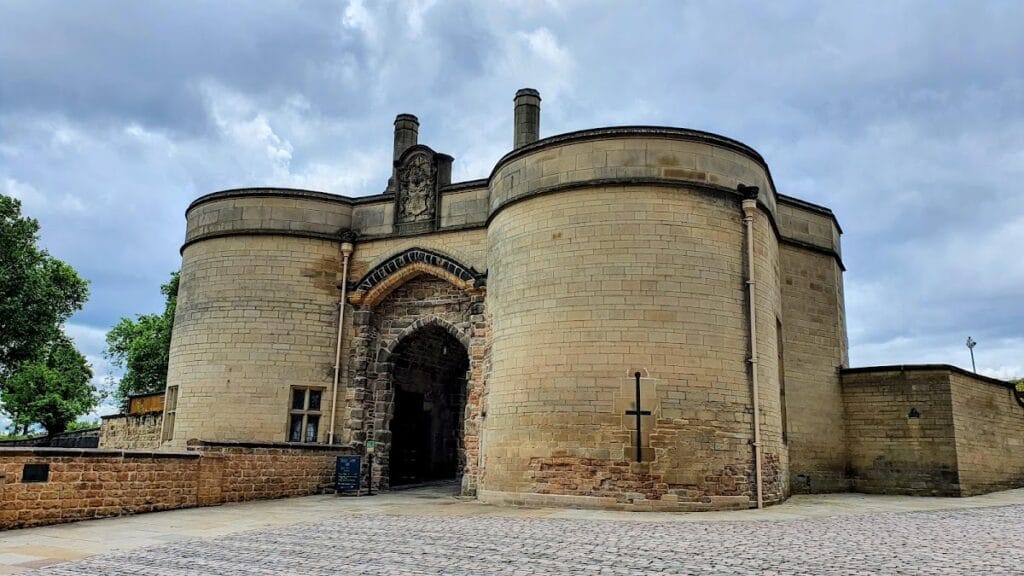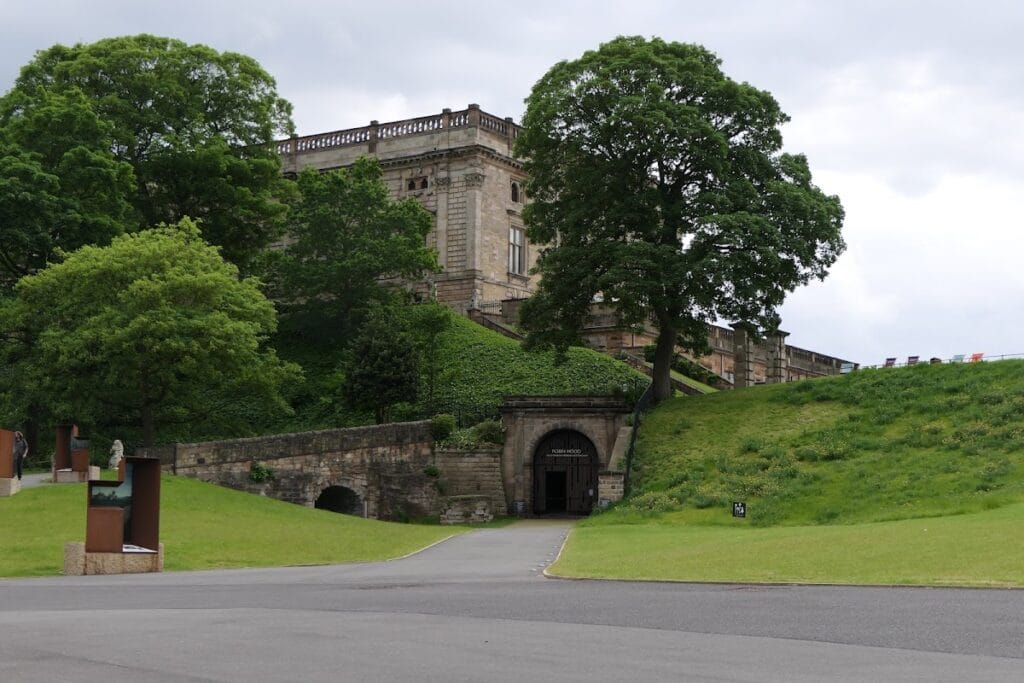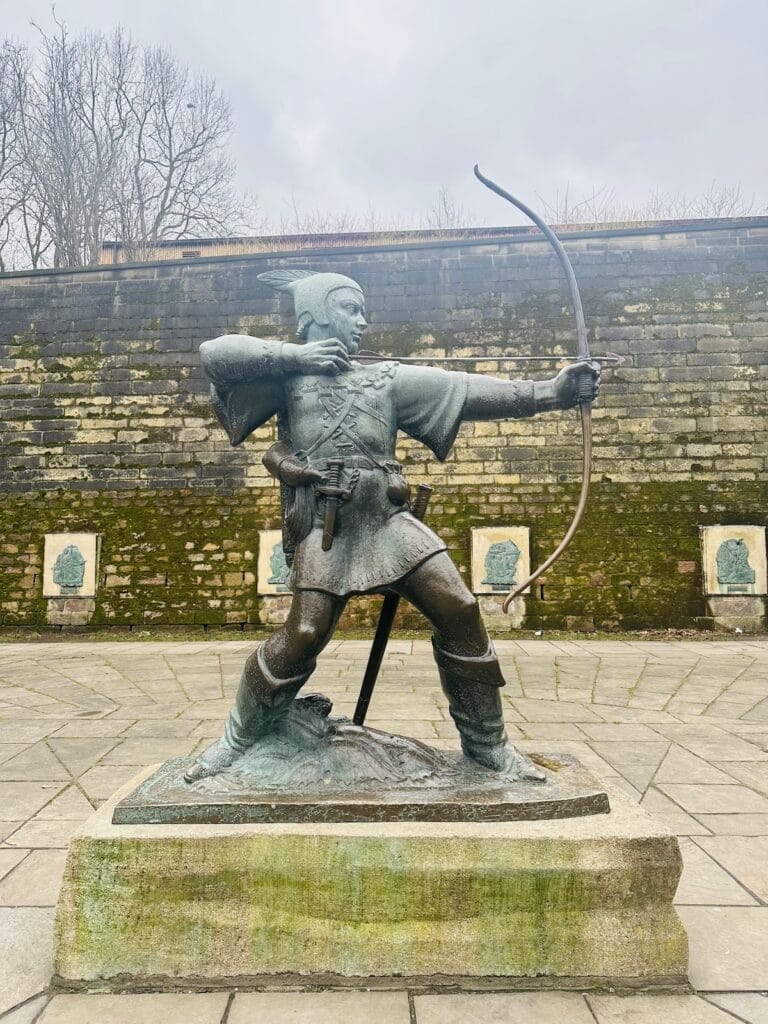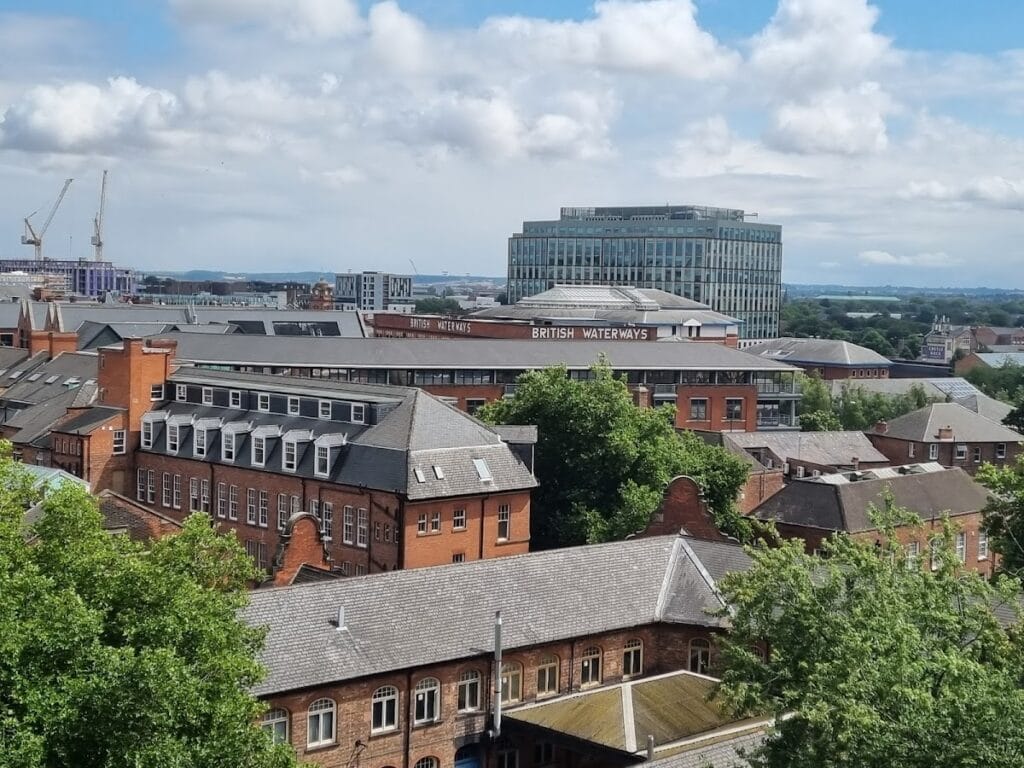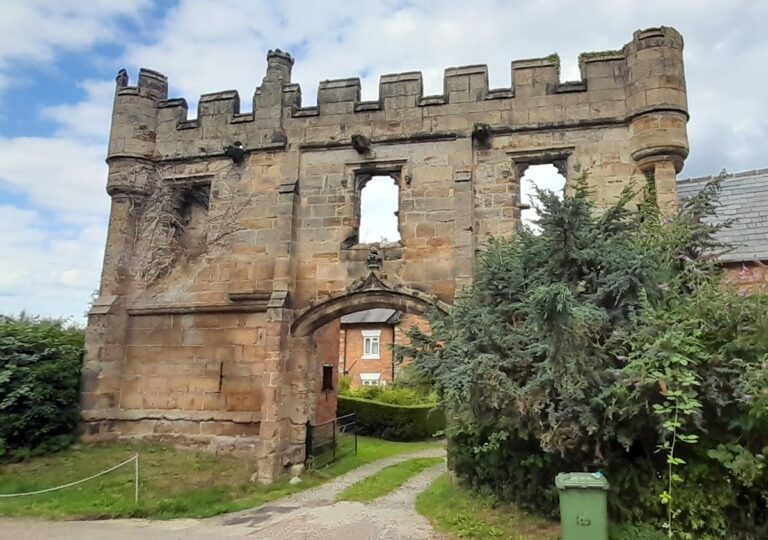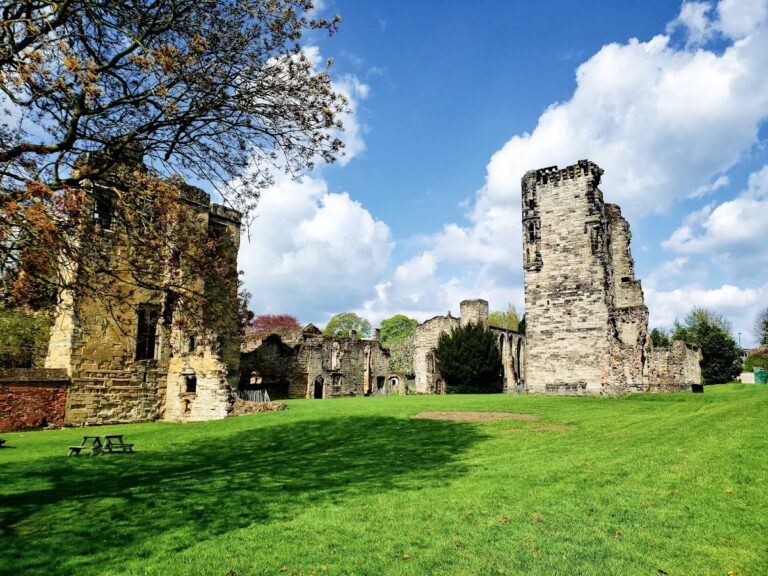Nottingham Castle: A Historic Fortress and Museum in the United Kingdom
Visitor Information
Google Rating: 4.1
Popularity: Medium
Google Maps: View on Google Maps
Official Website: www.nottinghamcastle.org.uk
Country: United Kingdom
Civilization: Medieval European
Remains: Military
History
Nottingham Castle, located in Nottingham, United Kingdom, was originally constructed by the Normans shortly after their conquest of England. Its foundation began in 1068 as a wooden motte-and-bailey fortress ordered by William the Conqueror, designed to establish control over the region and secure an important crossing near the River Trent.
During the reign of King Henry II in the 12th century, the wooden fortifications were replaced with a more durable stone castle. This new medieval stronghold featured a complex design with three baileys arranged on Castle Rock, a natural rocky promontory overlooking the surrounding area. The castle became a strategic royal site with accommodations suitable for monarchs, including royal apartments in the middle bailey.
Nottingham Castle played a notable role in key political and military events of medieval England. In 1194, King Richard I recaptured the fortress after a siege during a conflict with his brother Prince John, who had held the castle during Richard’s absence on crusade. It was also the location of a significant power shift in 1330, when Edward III removed his mother Isabella of France and her ally Roger Mortimer, thus beginning his direct rule.
Throughout the 14th century, Nottingham Castle served as both a royal residence and center for political activity, hosting state councils and imprisoning important figures such as King David II of Scotland and the parliamentary figure Peter de la Mare. The castle was periodically improved with new defensive towers and a prison, reflecting its continuing importance.
In the early 15th century, the castle was the residence of Queen Joan of Navarre for over three decades. Although its military significance declined in the following years, Nottingham Castle regained some attention during the Wars of the Roses, when Edward IV declared himself king there and ordered further construction.
By the 16th century, the castle had fallen into disrepair but saw renewed military enhancements under Henry VIII. In 1536, amid unrest linked to the Pilgrimage of Grace—a popular uprising opposing the king’s religious reforms—defensive works such as a new drawbridge and increased troops were added.
The castle ceased functioning as a royal residence before 1600, rendered militarily obsolete due to advancements in artillery technology. During the English Civil War, it was held by Parliamentarian forces under John Hutchinson and became their last stronghold before being deliberately destroyed in 1651 to prevent its future use as a military fortification.
Following the monarchy’s restoration in 1660, a grand new mansion was built on the site by William Cavendish, 1st Duke of Newcastle, and completed under his son during the late 17th century. This Italianate palace replaced the medieval castle’s upper bailey defenses and was regarded as one of England’s finest residences at the time.
In 1831, during widespread protests over the Reform Bill, rioters burned the mansion down, leaving it a ruin for several decades. The structure was restored in the 1870s by architect Thomas Chambers Hine and transformed into Nottingham Castle Museum, notable for being the first municipal art gallery established outside London.
More recently, the castle complex underwent an extensive restoration beginning in 2018, reopening in 2022 before changing management in 2023. Its museum now preserves collections spanning fine and decorative arts, local history, and regimental heritage connected to the Sherwood Foresters, among others.
Remains
Nottingham Castle occupies a commanding position atop Castle Rock, a natural limestone promontory rising about 130 feet above the south and west sides, providing strong natural defenses. The medieval stone castle constructed in the 12th century was laid out in three distinct baileys. The highest, or upper bailey, occupied the summit, while the middle bailey to the north contained royal apartments. To the east lay a large outer bailey, which accommodated additional buildings and fortifications.
Today, parts of the medieval castle survive beneath the later ducal mansion, including rock-cut cellars and pointed arches, offering tangible links to the Norman and medieval structures. The castle’s original gatehouse and sections of the outer bailey walls were retained as garden boundaries for the mansion, although some walls were lost during 19th-century urban development.
The ducal mansion that replaced the upper bailey’s medieval fortifications is an important historic structure in its own right. Built in the late 17th century by the Cavendish family, the design was influenced by contemporary European styles, particularly the works of Peter Paul Rubens. Its distinctive Artisan Mannerism architecture made it unique among English country houses. While the mansion’s eastern exterior staircase was removed after the 1831 fire to create a parade ground for a local rifle regiment, the building was restored in the 1870s. The restoration introduced a top-lit picture gallery inspired by the Louvre’s Grand Gallery, reconfiguring interior spaces without adhering strictly to the original floor levels or window placements.
Beneath the mansion, a long narrow passage known as Mortimer’s Hole extends down to the base of Castle Rock. This subterranean route has historical associations and is now part of guided tours illustrating the castle’s layered history.
The castle grounds include Brewhouse Yard, a group of 17th-century farm buildings located at the foot of Castle Rock. These structures are integrated into the museum complex and reflect the site’s extended historical use beyond the military and noble residence functions.
A notable event in recent archaeological history occurred in 1996 when a landslip caused by a leaking water main led to a collapse of a portion of earth and retaining wall from the Restoration terrace adjacent to the mansion. This incident exposed sections of original castle foundations embedded in the limestone bedrock, revealing construction details previously hidden until the terrace was rebuilt with a traditional stone façade.
The mansion’s image is culturally familiar, having appeared widely on John Player & Sons tobacco packaging where its elegant, non-fortress-like appearance made it instantly recognizable. Today, the castle and mansion together serve as a museum and art gallery, with exhibition spaces such as the Long Gallery displaying British and European artworks, alongside areas designed for educational activities linked to the legend of Robin Hood and the castle’s medieval past.
